What we’ll do here in this article:
- Learn how to make chord progressions
- Take a close look at the ingredients of chords and discover their hidden agendas
- Give your chords a sense of direction
- Learn how to use of pedal point and walking bass to bring life to tired progressions
See here for more ideas on all the steps to writing a song.
The harmonic palette of popular song is limited. Three and four-chord songs are still the standard in most pop, hip-hop, R&B, EDM, country, and rock genres. They don’t tend to change key very often or do much harmonic exploration. Songwriters find expression not so much in which chords they use but more in how they use those chords.
Through playing and listening, you will discover progressions you like. But very briefly here, before we get into some ways to be inventive with your progressions, I’ll mention four of the most popular progressions:
Four Popular Progressions
I – V – IV – V
and all its variations in major and minor keys such as: I – V, I – IV, i – v, i – iv. Here it is in Major:
I – V – vi – IV
This is the most popular chord progression in popular music (as discussed in our Songwriting Template 2021). It sounds like this:
I – V6 – vi – V
This progression uses a step-wise descending bassline. Bob Marley’s No Woman, No Cry is a clear example:
bVII – I
bVII is a borrowed chord from the Mixolydian mode. It sounds more complicated than it is. In the Beatles Cry Baby, Cry below, the bVII chord is just an F chord in G Major.
*Note About Roman Numerals
I will use roman numeral notation for chords so that we can compare across different key signatures.
(quick guide in C major: I = C, ii = Dmin, iii = Emin, IV = F, V = G, v i= Amin, vii= Bdim)
How to Make Chord Progressions With a Sense of Direction
The focus of this article is on using chord progressions to give a sense of direction and expectation for your listener.
You don’t have to use chord progressions to create a sense of direction in your songs. A lot of today’s popular music, especially hip-hop and EDM, relies less on harmony. Instead, these styles use more cadential rhythms, drops, tempo changes, filters, and risers to create a sense of direction and expectations for listeners.
That being said, tonality has all sorts of built-in bells and whistles in its chord progressions that you can play with to create expectation and forward movement. This is something that you should take advantage of in all songwriting.
Tonality:
The concept of being more in one key than another. A system where tones and harmonies are organized to create a sense of home, or arrival.
Thinking Vertically and Horizontally
Chord progressions can be an exciting way to move a song from A to B. Because music expresses itself in time, chords are the sum of one particular moment, while melodies are the sum of a few bars of music or a few seconds. Visually, chords happen vertically on the page or in your DAW, and melodies are the result of horizontal movement.
Harmony or chords along with rhythmic downbeats are the trees and the melodies are the monkeys that swing between those trees. So if you want your monkeys to go somewhere, you want to plan your trees accordingly.
You can create a journey for your listener through harmonic progressions. You can set up certain expectations for the listener and either give them what they want by resolving, or leave them hanging.
But chord progressions by themselves all in root position can sound choppy. There’s no forward movement or flow.
We’ll discuss the following practices you can use to create a sense of direction and expectation:
1. The Built-in Magnetism of Chords
- Scale Degrees
- Cadences
- Secondary Dominants
2. The Bassline to Move the Progression Forward
3. Inversions
4. Pedal Point
1. The Built-in Magnetism of Chords
Scale Degrees
The term functional harmony is broadly used to describe harmony (chord progressions) as it works within tonal music. It implies that there is a functional order to all the chords because of a magnetic pull toward the tonic (the first scale degree of the key we are in).
The ingredients of chords, the individual notes or scale degrees, have their own particular qualities and desires. Here are scale degrees, the different notes numbered according to their position in a diatonic scale. There are stable notes and unstable notes in the scale.

As our ears are exposed to certain patterns in music, this has created a sense of expectation in listeners. One of the main patterns that we have become used to hearing is a sort of magnetic pull toward the tonic chord. The tonic chord is made up of the 1st, 3rd, and 5th scale degrees; these are the stable notes. All the other notes in the scale are unstable; unstable notes want to resolve.
The note that wants to resolve the most is the 7th scale degree, also known as the leading tone. You can hear the pull hear below. You want to hear the resolution to the tonic (C). I know you do.

Cadences
Chords are commonly three notes separated by the interval of a third, known as triads. Using only the notes in a given key, we can create a triad out of each scale degree like so.
Major Scale Triads

Natural Minor Scale Triads

The usual pattern begins on the tonic chord ( I ), finds its way to a few other chords, then to the dominant (V) and finally, resolves back to the tonic ( I ).
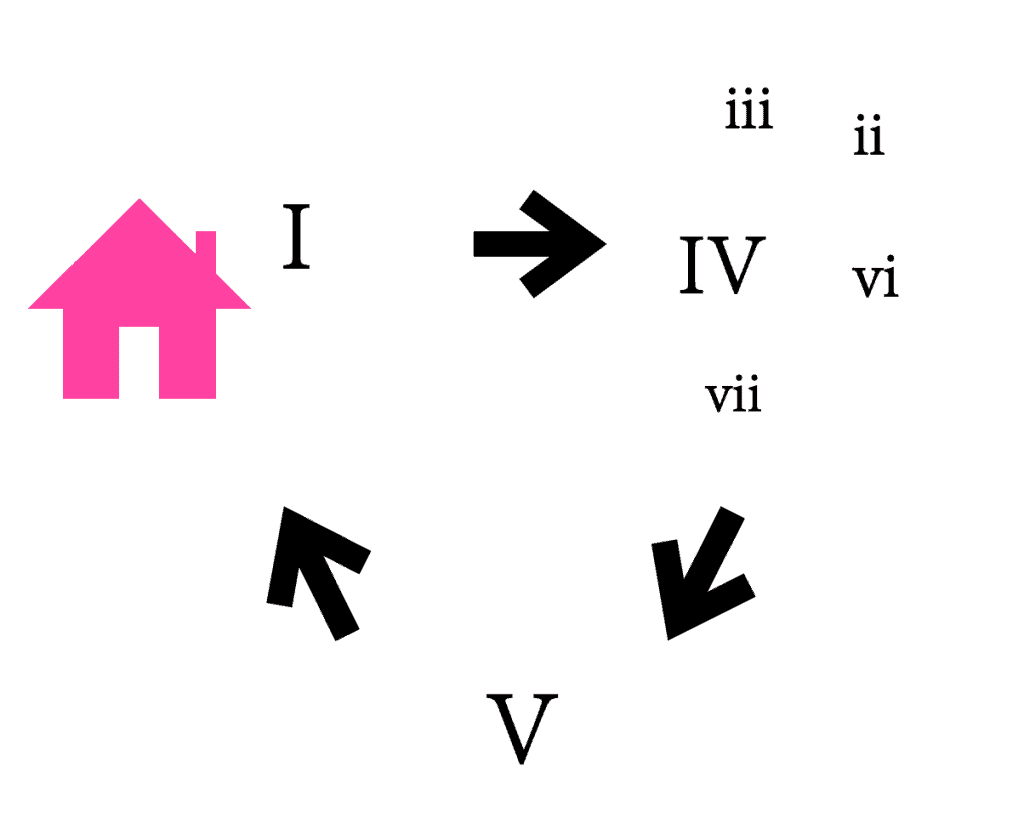
The V chord has the strongest pull toward the tonic because the top note of its triad is the leading tone. The V chord (also known as the dominant) and the IV (subdominant) have notes in common with the tonic. Furthermore, chords separated by a fifth have a special magnetism.
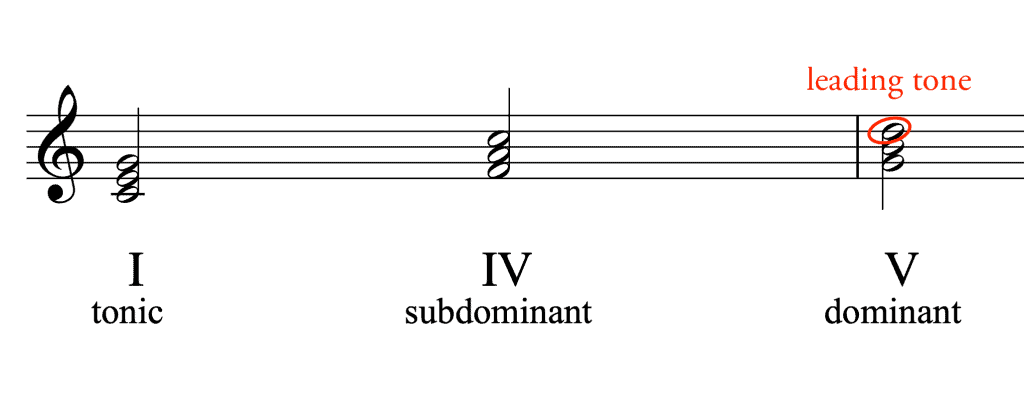
All these factors contribute to our two most common resolutions: V-I and IV-I. Cadences are the moments where the harmonic progression comes to a point of rest. (Not to be confused with poetic cadence or cadence in Rap)
Given the right support from other musical elements, any two chords can create a cadence or a sense of resolution. But V-I and IV-I are your bread and butter cadences to create a sense of direction.
The V – I Cadence
In U2’s Where the Streets Have No Name, we have a clear example of a departure from the tonic, followed by a build-up to the V7 (“I go there with you”) and finally a resolution on the tonic. (“It’s all I can do”). (player starts right on the final cadence)
The listener expects, and almost hopes for, the resolution to I. This expectation gives the song forward moving energy.
The IV – I Cadence
The IV-I cadence is nearly as common as V-I in popular music. It creates a strong sense of expectation as well. Here in Jealous Guy sung by Donny Hathaway, we find a clear example. The final line of the chorus (“I’m just a jealous guy”) is a strong IV – I cadence. (Player starts from the chorus)
How to Write Chord Progressions with Secondary Dominants
If we look at Crazy by Patsy Cline below, you might wonder why the G chord in the second measure is major. The song is in Bb major, so the vi chord should be G minor. But our ears are so used to hearing a V-I resolution, that it sounds right in this context because it resolves to its tonic, in this case, C minor.
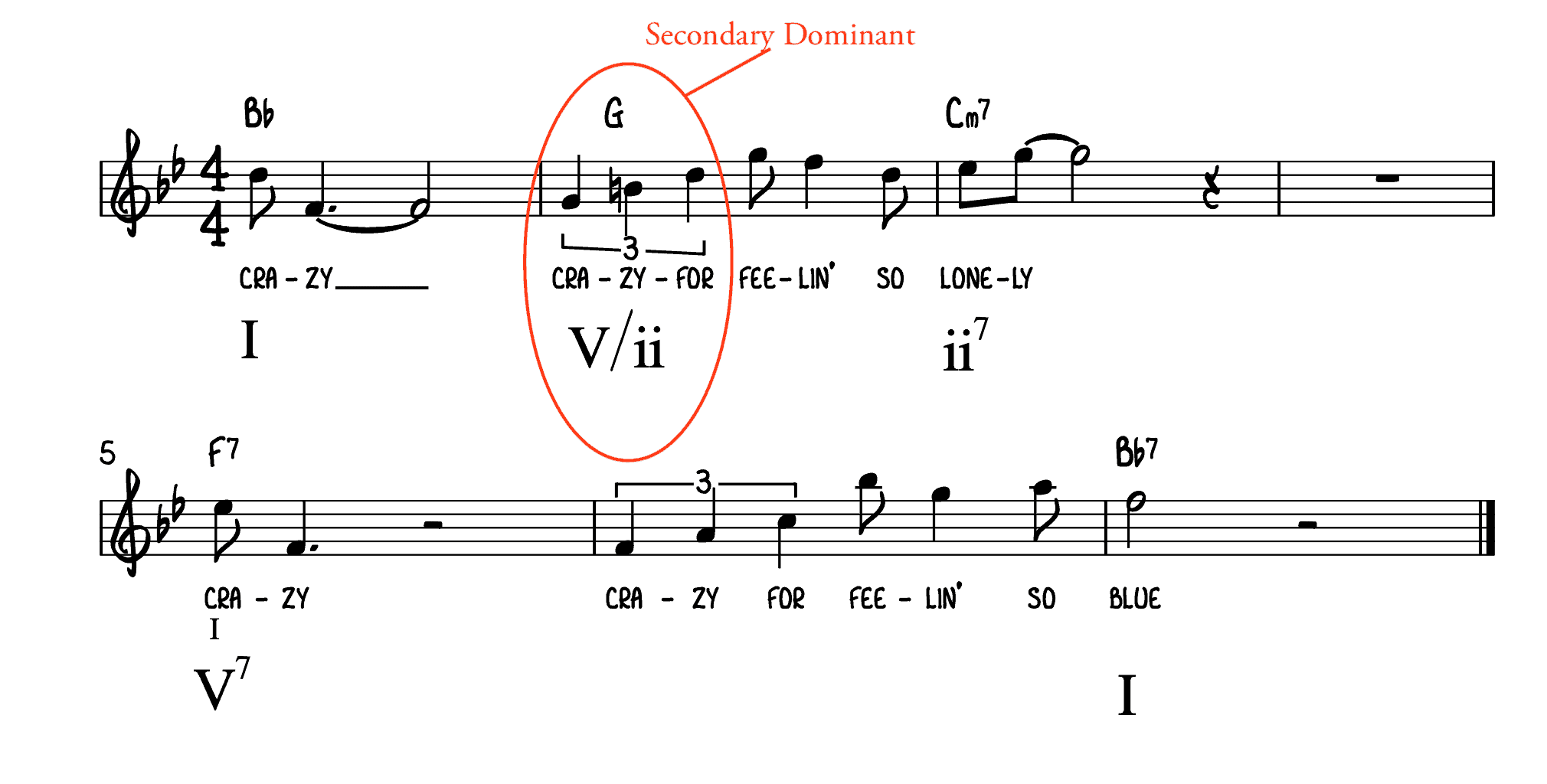
This is what is known as a secondary dominant. The magnetic pull of the dominant (V) to its tonic ( i ) is so strong that our ears expect to hear a V-I cadence, even if that tonic is not in the key of our song. In roman numerals this is written V7/ii, to indicate the function of this G major chord here in Bb Major.
The Dominant 7th
Secondary dominants are even stronger when using the dominant 7th chord. If we stack another third on top of a triad we get a 7th chord. The V7 has the interval of a tritone between the chordal 3rd and the chordal 7th, making it highly unstable, and even more ready to resolve to I.
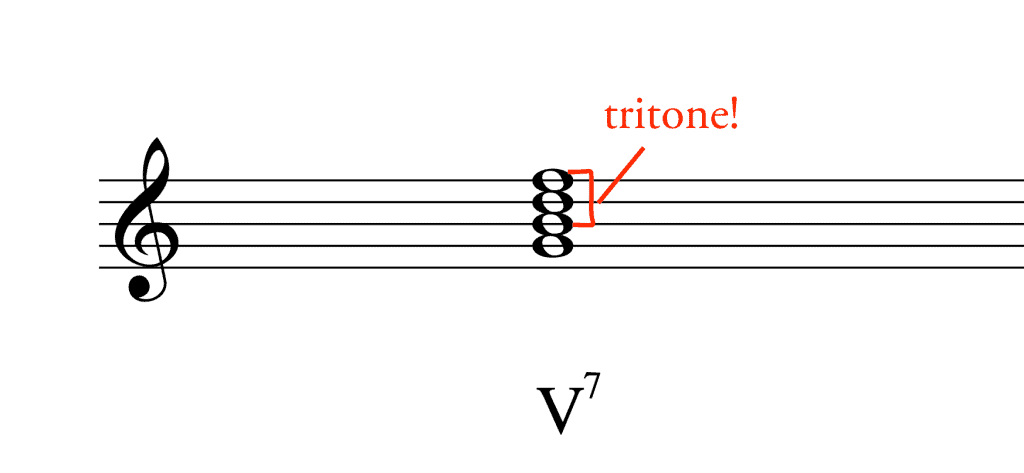
In the B section of Crazy, we see the use of this magnetism in V7/V.
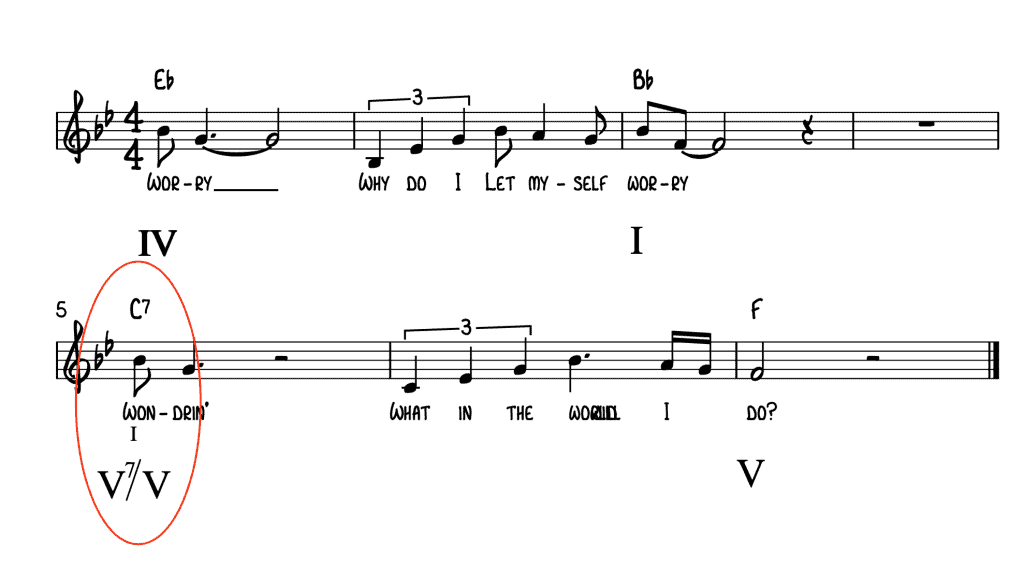
Secondary dominants are a great way to create direction in your progressions. They can spice up any progression you’re bored with. You can string these secondary dominants together to really move your monkey through the trees like the Beatles do here:
Secondary Dominants in The Beatles “You Never Give Me Your Money”
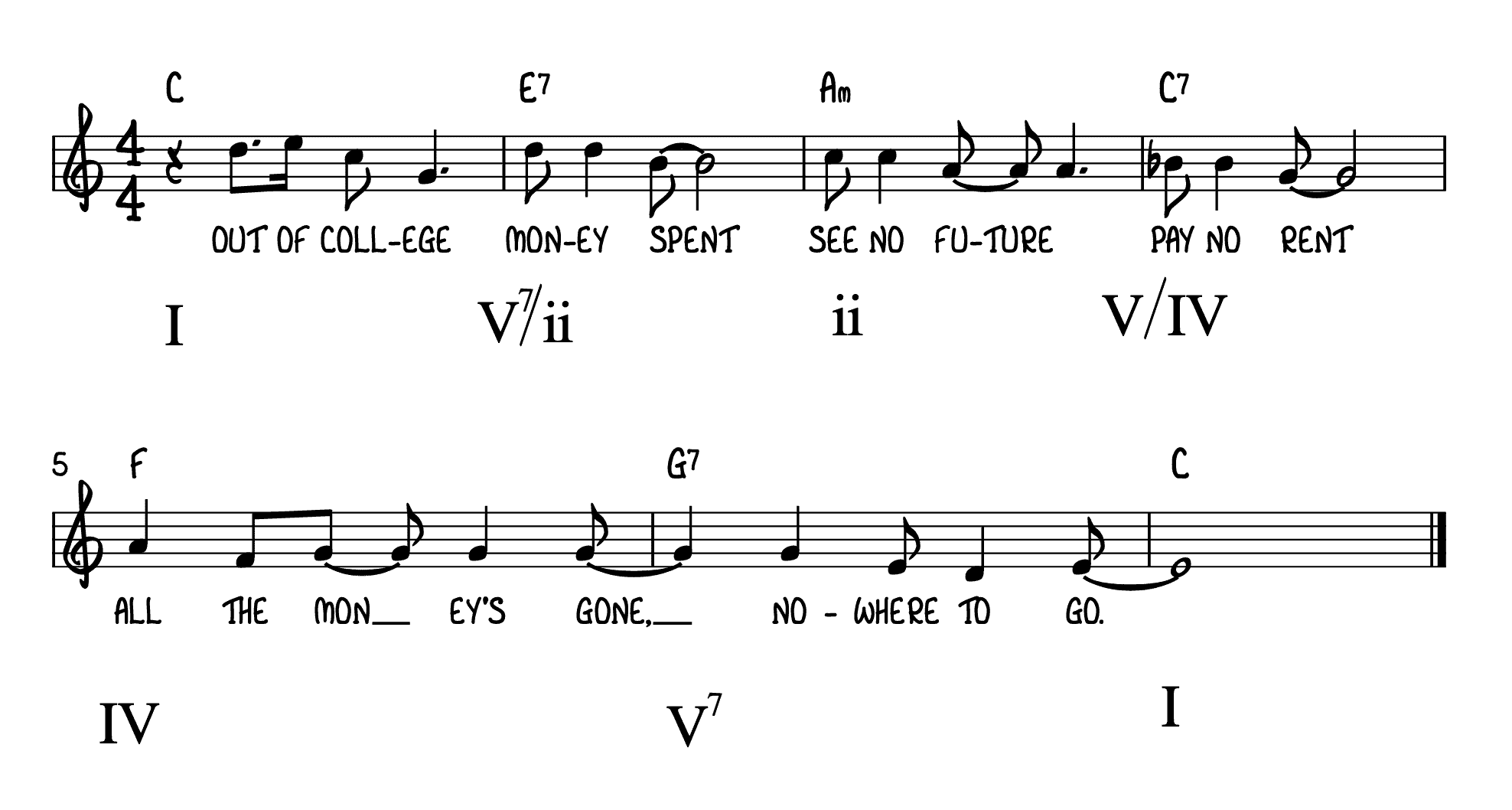
2. Using the bassline to move the chord progression forward
One of the ways to get some flow into choppy-sounding chord progressions is to use a step-wise moving bass.
The Beatles use this technique in All My Lovin below:
Step-wise Bass in “All My Loving” The Beatles

Step-wise descending bass can give the listener a falling-forward sense, and step-wise ascending a sort of ramping-up feeling.
3. Using Inversions
Sometimes a step-wise moving bass can be created by using inversions.
Shown below are the inversions of the tonic in C major with standard roman numeral notation.
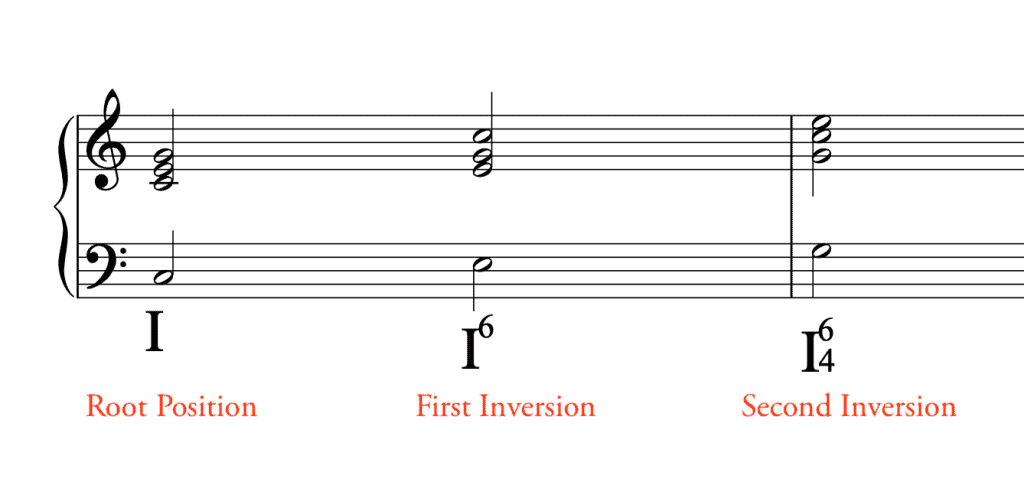
By simply choosing to use a different note from the triad as the bass note, you can create a sense of direction with chord progressions.
Here below are standard diatonic chords. Using only first inversion we can create a complete step-wise bass in both directions.
Step-wise Bassline created using First Inversion Chords

See how Elliot Smith uses this technique in Say Yes below:
Use of First Inversion to create step-wise bassline in Say Yes, Elliot Smith
Of course, you can also use second inversion to achieve the same effect. Some common chord changes using second inversion to achieve a step-wise bass are shown below:
Step-wise Bassline created from Second Inversion, 3 Examples
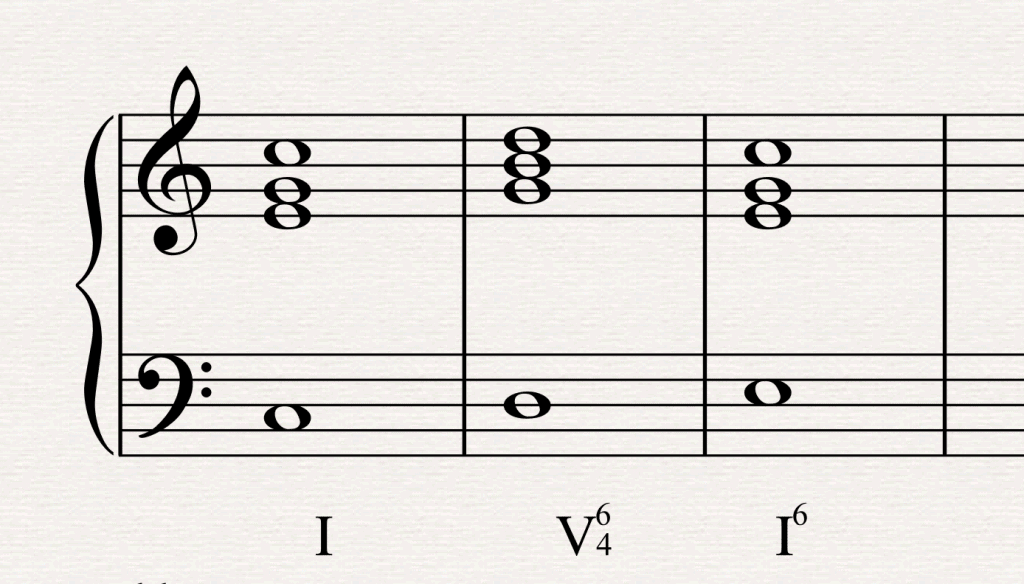
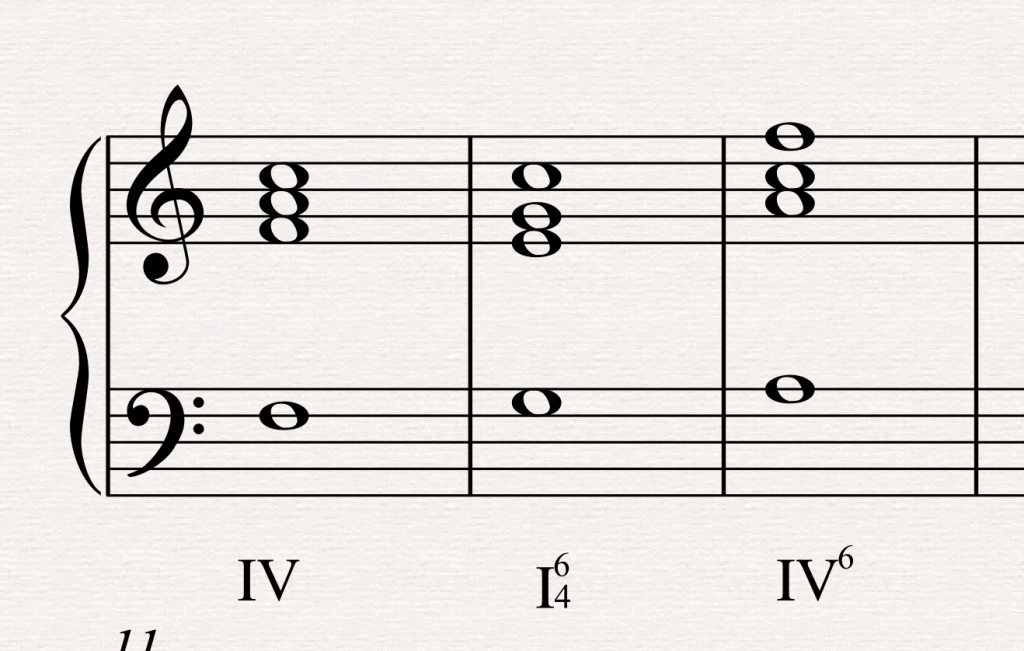
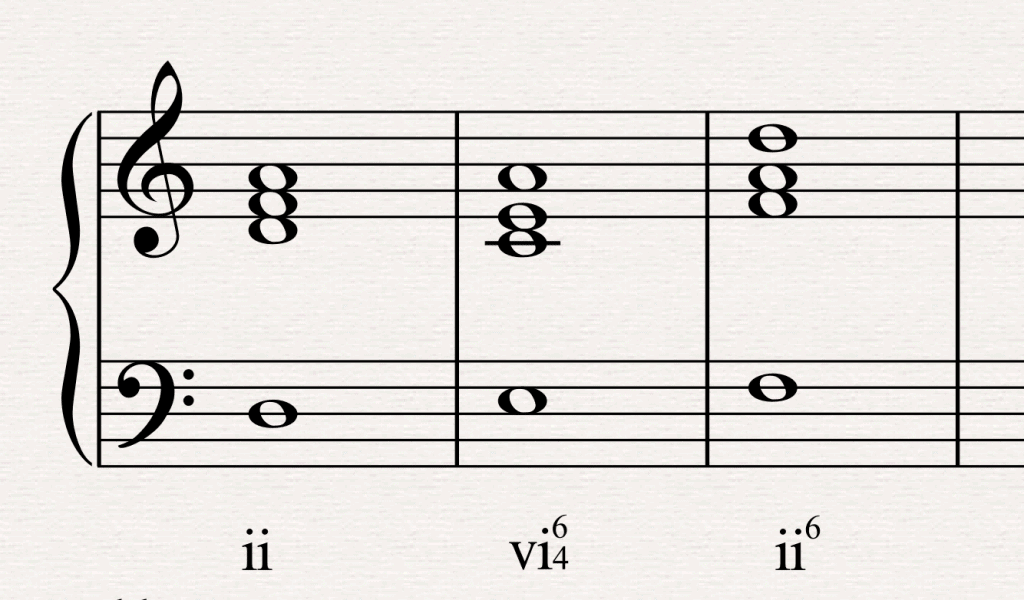
4. Writing Chord Progressions with Pedal Point
The final method I would like to mention for creating a sense of direction in your chord progressions is the use of a pedal point. A pedal point is where one note remains constant while the harmonies around this note change. It is introduced as a chord tone and then becomes a non-chord tone. Like in the first couple bars of Your Song, Elton John, Eb remains constant in the bass while the chords shift above it:
Pedal Point in Elton John’s “Your Song”
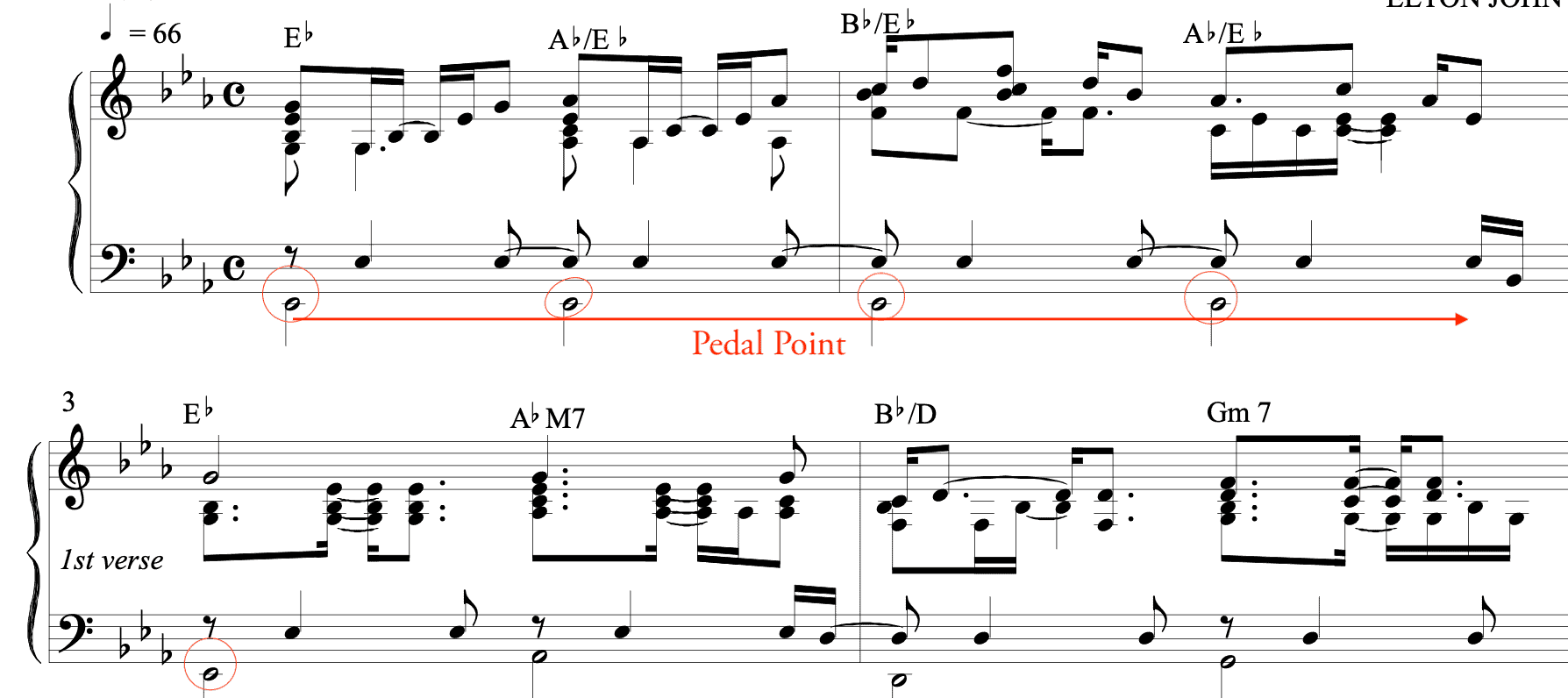
Pedal point is a way of thinking horizontally in your songs’ chord progressions, a bit of glue to stick the chords together. Pedal points usually occur in the bass but they can occur in any register. Radiohead uses a pedal point in the upper register here in Everything in its Right Place:
Pedal Point in Radiohead’s “Everything in its Right Place”

Conclusion
We will discuss more ways to be inventive with your chord progressions in future posts, but I hope these techniques can get some ideas flowing for you. Until next time, happy songwriting!
(See here if you’re looking for more ideas on how to write a good song.)